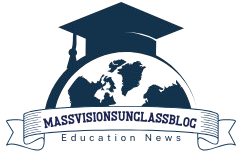
History of the Waldorf
History of the Waldorf. Introduction The very basis of Societal Growth, the cornerstone and backbone is its education system– a dynamic network built to enhance intellectual growths as well imbibe with certain set of skills which further advances mankind. In its most general form, the education system encompasses all institutionalized roles which are connected to knowledge, culture and positions in society. And, through centuries of innovation and collective effort over time this complex web has morphed into a behemoth, adjusting to the ever changing demands while also molding our world.
Background of the Education System
Ancient Civilizations: where the idea of a structured education system started. Formal education was the privilege of elite in ancient Egypt, Greece and China; including such level as philosophy, mathematics or arts. The traditional teachings, emphasized rote memorization of religious texts following a one-dimensional didactic approach which is juxtaposed to multitiered learning adopted in the present times.
Thereafter, the renovation of education system begins under humanism and classic knowledge during Renaissance period. It was the period when universities were founded and secular education spread, all of them together for what would later become a kind of modern mass compulsory education. The Enlightenment advanced these developments, promoting a system of education that accentuated both rational and critical thinking as well as the scientific method.
Modern Educational Structure
A marriage of the past and present, education in this day and age is an intricate continuum that operates on many levels. Its provisions consist of three levels namely- primary, secondary and tertiary level with unique purposes and methods. Primary education is the basic fundamental level of your learning in which a child should learn how to read and write, do some elementary arithmetic while secondary works on building this foundation by incorporating other subjects like arts,science,social studies.
Tertiary (higher) education includes highly specialized teaching through the colleges or universities, where students seek degrees and skills not offered at lower levels. It is at this layer through which individuals are moulded into major players in areas such as economy, technology and the cultural industries. Moreover, modern education system comprises vocational training and adult education to satisfy the requirement of an immense global workforce.
The Challenges Faced by the Education System
If the school systems have made improvements, they are not without their problems. An urgent concern is the unevenness in access to educational resources, making the rich-poor divide even more severe Nowhere is this disparity more distinct than in emerging economies, where good school-prospects are still a mighty impediment for the underprivileged ending up on top.
In addition, the traditional education has been criticized for being rigid. Opponents of the system say it often puts too much emphasis on standardized testing, discourages critical thought and creativity. The education system also has to grapple with the breakneck speed of technological development, meaning that course contents have to be continuously updated so as best prepare students for a world increasingly defined by automation and artificial intelligence.
Technology In The System Of Education
Education industry is one of such industries which are challenged most by this kind of free things technology has brought on the platter. On the one hand, digital tools integrated with teaching have completely changed the approach to education by erasing geographical barriers and giving everyone a chance for access to information as never before. Education has been democratized more than ever now through the e-learning platforms, virtual classrooms and educational apps available to a global audience.
However the digital divide is still in itself a very large barrier, especially for areas like this where access to technology is low. The education system has to walk this tight line between using technology as a catalyst for improved learning and leveling the ground with respect to some of its inherent inequalities.
Education 3.0 — The Future of Learningurrencies Hisuffix to(prefix)ter Education System
The future will see changes that just see mintangible to the wider community today in the education system. Beyond mere innovation in programs and delivery, the growing acknowledgement of lifelong learning as an area for targeted improvement will likely result in a transformation of our traditional models into something much more flexible, diverse, and responsive to individual needs. They are based on algorithms that process data extracted from individuals and reinterpret it in pseudo-individualized sessions around each student’s assumed learning profile (tied as closely to individual strengths/weaknesses, etc.
No longer in silos, the education systems of the future will likely focus on intersectional studies that are reflective of our connected world. Traditional silos between subjects will break down, and students will learn in a more connected manner — that more accurately prepares them for the complex systems of global issues.
It is in this changing context that educators will be at the forefront of leading an education system towards a more just and equitable future. Such a diverse student body requires teachers and administrators to be willing to change, they follow these unproductive practices because they accommodate White students; therefore, new pedagogical strategies reflective of the shifting needs should replace those ones. A resilient system must be adaptable, and a well-functioning adaptive public education ecosystem will require collaboration among all parts of society—government players operating in their policy sandbox as previously described; the talent development infrastructure broadly writ—the educational sectors themselves (K-12 through adult/continuing/post-secondary); regional leadership from cities or towns; other state and federal investment/partnership sources such as foundations.
Conclusion
The education system is not a static field; it always adapts based on our ever-changing society. The history of the library is a story about humanity’s eternal pursuit for knowledge that has brought people together since antiquity to create whole civilizations and forge our shared future. Entering a new era, in this most disruptive of times learning must be ready to do the same, upholding both tradition and progression by delivering on its core purpose: nurturing human intellect for societal benefit.
The pursuit of education changes lives, and so the system that provides it must also be up to this task — always challenging its practices in order to keep pace with all who need what is willing-ready-able. It will not be smooth or easy, but it is possible with foresight and the belief that we can make our education system a constructive force for good in an increasingly divided world.
